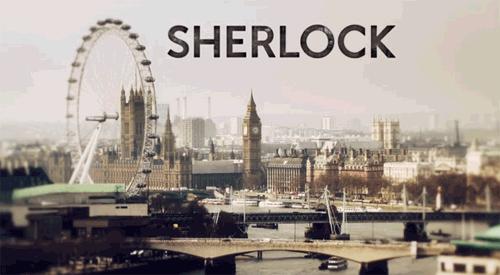 The greatest detective of all-time rises up once again from the ashes in the series Sherlock that was broadcast last summer on BBC One. Co-created by Steven Moffat and Mark Gatiss, this 3 episodes long series relates the story of Sherlock Holmes and Doctor Watson’s adventures in 21st century London. Even if the context is not the same, the iconic elements of Sir Arthur Conan Doyle’s novels remain: The names, the address (221b Baker Street), Holmes’ twisted mind, the brilliant deductions and the dreadful crimes. Not only is the plot well put together, but the actors also give an incredible presence to their character: Benedict Cumberbatch (the Other Boleyn Girl) stars as the new Sherlock Holmes and Martin Freeman (Love Actually) as his loyal friend, Doctor John Watson. “Cumberbatch", says The Guardian, "has a reputation for playing odd, brilliant men very well, and his Holmes is cold, techie, slightly Aspergerish”. What the public thought to be a potential disaster turned out to get excellent reviews from many respected analysts.
The greatest detective of all-time rises up once again from the ashes in the series Sherlock that was broadcast last summer on BBC One. Co-created by Steven Moffat and Mark Gatiss, this 3 episodes long series relates the story of Sherlock Holmes and Doctor Watson’s adventures in 21st century London. Even if the context is not the same, the iconic elements of Sir Arthur Conan Doyle’s novels remain: The names, the address (221b Baker Street), Holmes’ twisted mind, the brilliant deductions and the dreadful crimes. Not only is the plot well put together, but the actors also give an incredible presence to their character: Benedict Cumberbatch (the Other Boleyn Girl) stars as the new Sherlock Holmes and Martin Freeman (Love Actually) as his loyal friend, Doctor John Watson. “Cumberbatch", says The Guardian, "has a reputation for playing odd, brilliant men very well, and his Holmes is cold, techie, slightly Aspergerish”. What the public thought to be a potential disaster turned out to get excellent reviews from many respected analysts.
The first episode, a Study in Pink, is inspired by Conan Doyle’s novel a Study in Scarlet and lasts 90 minutes. In this episode, Dr. John Watson returns in London after being invalidated out of the army and moves in a flat with the most eccentric private detective, Sherlock Holmes. Watson soon discovers that, whenever the police’s investigations seem to reach a dead end, Holmes is always the person they turn to. In a Study in Pink case, Holmes and the detective inspector Lestrade investigate the deaths of four people, who all seem to have committed suicide. However, further analyses show that there is more than meets the eye. Holmes supports this deduction, especially after examining the recent victim, a lady dressed in pink, who scratched the word “Rache” on the floor. As Conan Doyle says in The Return of Sherlock Holmes: "Come, Watson, come. The game is afoot. Not a word! Into your clothes and come!"
At this very moment, I think Conan Doyle must be spinning in his grave with delight. I am a Sherlock Holmes fan for years now and, in my opinion, this series is so far the best adaptation of Conan Doyle’s novels I have ever seen. People tend to see Holmes as a noble, elegant genius, but they also tend to forget the unusual parts of his personality, like his arrogance, his rudeness and his creepy thirst for excitement. In the series, those parts are pointed out in a funny and natural manner. For instance, when Holmes learns that there is a 4th victim, he says quite happily: “Four serial suicides and now a note! Ah, it’s Christmas!”. British humour is not the only thing that made me thrilled about this series, there was also a terrific Victorian music that made me say “Wow, SO British!”. It is clear that Sherlock is very different from series like the Experts or some crime series; it is in fact even better. When the Experts deals with crime and focus on how to find the murderer, Sherlock plunges its audience into a thick mist of mystery in a Londonian atmosphere that makes you actually wants to see more.
Concerning the realization, Moffat and Gattis (who actually plays a character in the series) did their job properly. In the movie adaptation “Sherlock Holmes” that came out this year, Holmes’ train of thought is said aloud so that we can keep up with his analysis. In the series Sherlock, the camera looks at the clues as if we were Holmes himself and a text appears to indicate what this discovery means. Throughout the whole episode, the camera always gets the right angle at the right time; the shooting is incredibly well thought and catches the action with intensity.
Though the series remains one of the best I have ever watched, there are a few things that bothered me. Even if Watson is finally a full-bodied character (in opposition to the books), he remains quite dull and acts quite unrealistically in view of certain situations. I also find strange that Watson, whose leg was injured at war, was able to run like a rabbit during many sequences, even though he complains many times about it at the beginning of the episode.
by Mélinda Mottint













